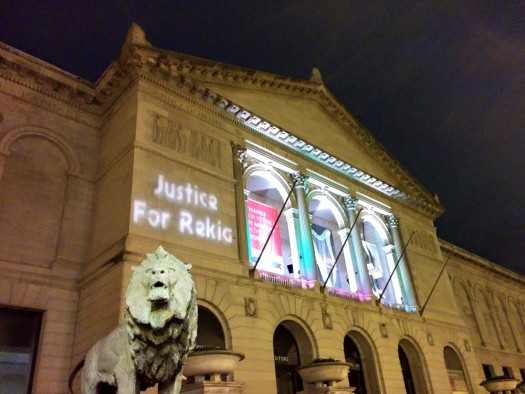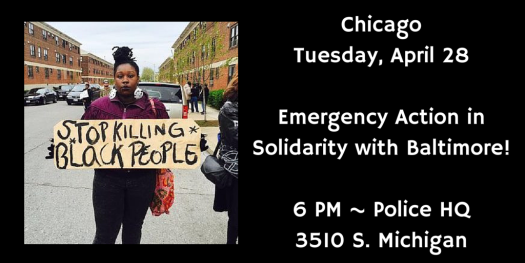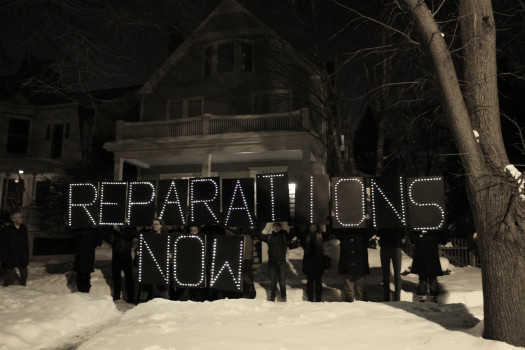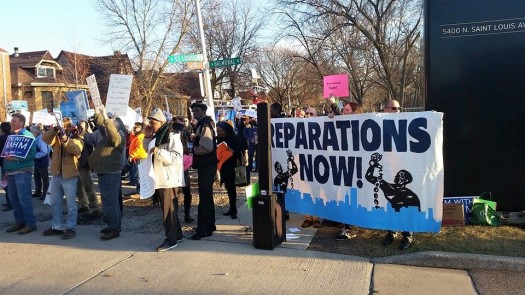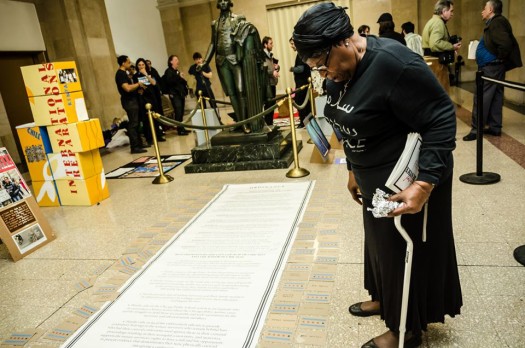On Showing Up, Erasing Myself, and Lifting Up the Choir…
It was unlikely that we would come to know her by her first name: Rekia. She was a 22 year old young Black woman when Dante Servin, a CPD detective, shot her in the head. In the political economy of memorials and public grieving, being a young Black woman is not advantageous. The names that we lift up (when we memorialize Black lives at all) are usually attached to cis heterosexual men. Sean, Rodney, Amadou, Mike, Tamir and now Freddie…
I was at the Nashville airport last Monday when my phone started ringing. Friends who were at Dante Servin’s trial were calling and texting to relay the news. Judge Porter granted the defense’s motion for a directed finding and dismissed the case against Servin. I was not surprised. I only felt sad for Rekia Boyd’s family. They did not get the justice that they sought. They waited three years for Servin’s day in court. They fought for over 18 months just for an indictment. No cop had been tried for killing someone in Cook County for 17 years. And last Monday, Dante Servin walked out of 26th & California a ‘free man’ ready to carry a gun and to patrol the streets again.
In Chicago, Servin’s acquittal led to a couple of small, heart-felt protests and some limited outrage.
A couple of weeks ago, I lamented how few people attended a rally on the first day of Dante Servin’s trial:
I can’t lie. I was disappointed in the turnout. I know, I know that there are hundreds of reasons people didn’t show up in numbers. A friend mentioned that perhaps the rain had kept them away. I stared at him. We both knew the truth. For all of the talk of Black Lives mattering, all evidence points to the opposite. Rekia’s life surely mattered to her family and friends. It matters to the small but determined group that showed up in solidarity with her family today. Beyond that though, no, Rekia’s life doesn’t matter in this country.
There is in fact a hierarchy of oppression as Black women, Black trans and gender nonconforming people have even less access to limited sympathy than do cis heterosexual Black men. To deny this is to be a liar. When we call out ‘who will keep our sisters?’ too often we are greeted with one or two lone voices in the wilderness but usually with silence.
Partly in response to my words & as a balm for my and others’ demoralization, some friends and comrades organized a beautiful show of support and solidarity for Rekia. My friend Kelly, one of the organizers of the light action, wrote:
But tonight, after a great deal of discussion and reflection, my friends and I decided to offer what we could to those who are mourning, discouraged, and in need of hope. We decided to offer a bit of light and action, in the hopes that seeing a message for Rekia projected in the night sky, in the heart of our city, might make them feel a little less disheartened, and a little less alone. It’s a small offering, to be sure, but it is one that is made with love, and with a great deal of hope.
I was very moved by the light action. I have struggled for a couple of weeks to adequately convey my emotions. I found some words after reading a post titled “No One Showed Up To Rally For Rekia.” While the title suggested an absence of people at the rally, the post began with this sentence: “Last night in New York City’s Union Square, a modest crowd of between 30 and 50 people (depending on who you ask) showed up to rally for Rekia Boyd and Black women and girls who’ve been killed by police.” So, in fact, some people (albeit a small number) did attend the rally.
The title of the post grated. I thought of those few dozen people who took the time to show up for Rekia and her family. Perhaps they were members of the choir so to speak but they were definitely somebody. One of the organizers of the rally noted on social media that she was frustrated that those people who did show up (mostly black women) were being dismissed and overlooked. She suggested that this was both an erasure of black women’s labor as organizers and a discounting of the fact that we regularly show up for each other even when others do not for us. She was right on both counts.
I often remind others of the importance of lifting up the choir, of insuring that those who do show up know that we are grateful for and value them. I’ve lectured others on the importance of never taking the choir for granted. Yet as I struggled with my demoralization, I disregarded my own admonition. Those of us who show up matter and as Kelly has written: “…what we are doing together matters, and must continue.” In a sense, I had written myself out of the story of resistance against Rekia’s killing. I had erased myself as a Black woman who shows up for other Black women across the spectrum and who understands that I cannot live without my life.
There is a lot of pain and anger about the invisibility of Black women, trans and gender-non conforming people in struggles against state and interpersonal violence. Rightly so. It hurts to be erased and overlooked. But it’s important, I think, to simultaneously recognize those who do, in fact, insist on making these lives matter too. It’s always both/and.
Later today, some of us in Chicago will show our solidarity for our comrades in Baltimore and also for Rekia and others killed in our own city. Join us if you can! We’ll be lifting up the choir.

